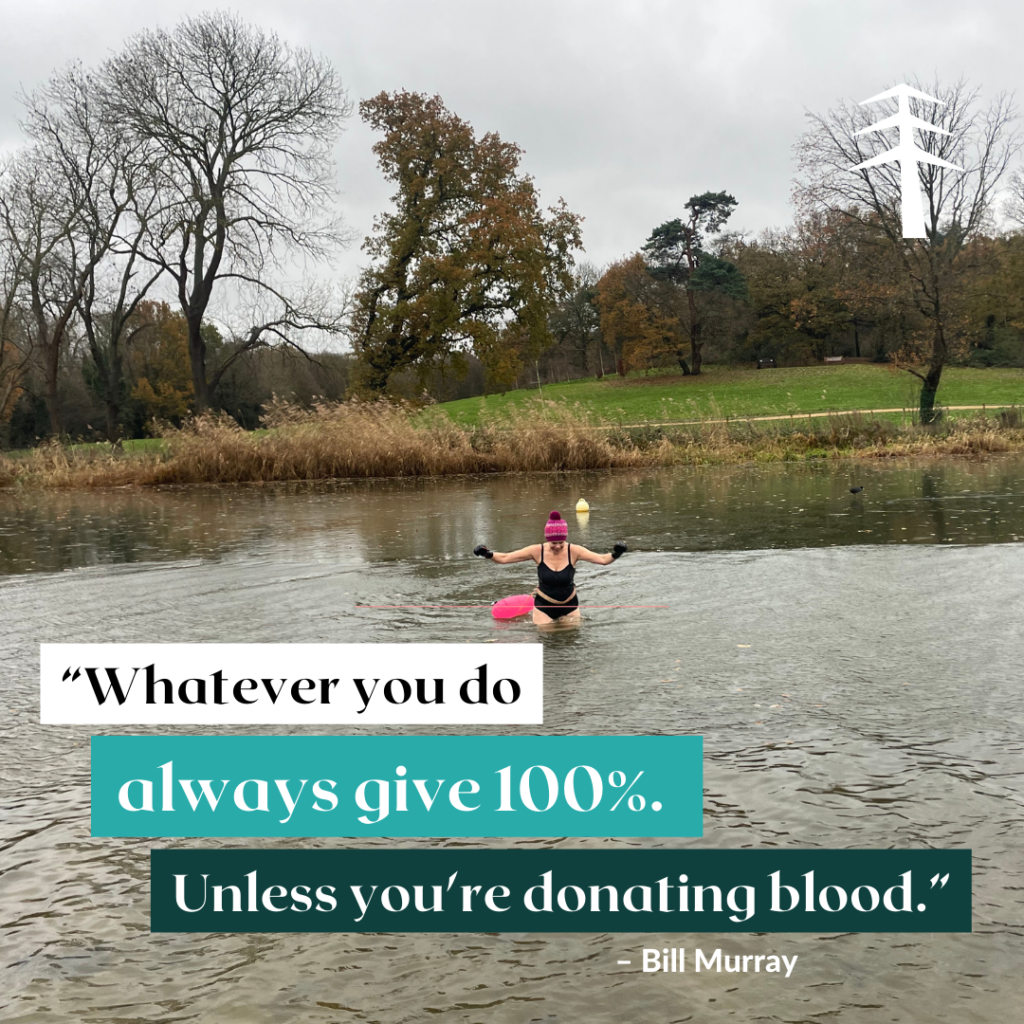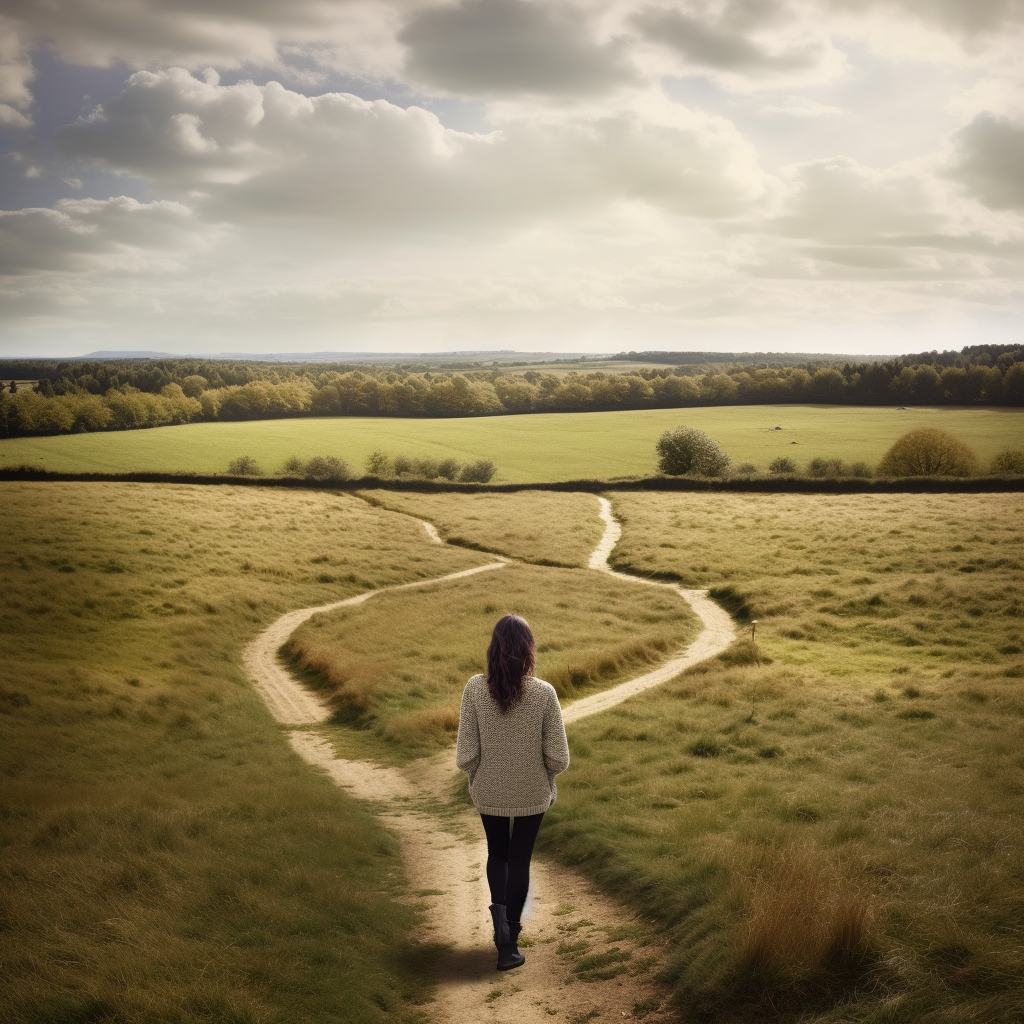4 minute read with resources
It’s not uncommon to find yourself at a crossroads in life. And if you’re in midlife, the ‘midlife crisis’ can seem very real; feeling stuck, unfulfilled, or unsure which path to take.
Maybe you’re considering a career change or life change or thinking, ‘is this how I want the rest of my life to be..?’.
The great news is that there are plenty of options available to help you.
Here are some life coaching tips that I notice are useful in my work, to help make sense of this pivotal time of change.
1. Take time to pause (rest)
When we take time to pause, we rest and digest – essential for the parasympathetic nervous system to perform its basic functions.
Rest..;
- Alleviates or reduces stress
- Promotes wellbeing and productivity
- Increases energy over time
We know that if we’re not well rested, we don’t operate well; moody, tired, make mistakes, feel on edge – the list goes on.
This article talks about the importance of taking breaks for wellbeing.
Taking a pause – a break – may be challenging if you’re feeling overwhelmed or feeling stressed. Here are some practical options about what it could look like for you;
- Time off work – a holiday, sabbatical, time in lieu etc
- A day by yourself to get away. IE the seaside, a long walk in the country
- Micro doses of rest – build and boundary small breaks into your day. Ie work 25 mins, rest 5 mins – Pomodoro Technique https://todoist.com/productivity-methods/pomodoro-technique
Benefits of taking a break
- Breathing space away from the situation
- A break in your routine, which may not be serving you
- Time for you
By resting we put ourselves in a stronger position to make better decisions and be a nicer person inside and out.
I run a group Walk and Talk for Midlife Women in Beckenham Place Park. Check out my Pause Outdoors collab here.

2. Work out what matters – values
Having paused, you’ve started to reset. Now to work out what really matters to you. These are your VALUES – your guiding principles on how you live your life and are unique to you.
Getting clear on your values enables you to notice;
- Where you are living your life in line with your values
- The choices you make – if they’re good/right
- What’s making you unhappy/ dissatisfied and understand more importantly, why
If your values – what’s important to you, are not present, you might feel discombobulated (my favourite word!). By doing this work, you might find clues that indicate why you feel like you’re at this crossroads in midlife.
Being aware of your values can give you;
- Clarity – work out what you really want and;
- Confidence in your decision making
Email me if you’d like an exercise on identifying your values, here.
3. Have fun – imagine what your life could be like!
You’re at this crossroads in midlife, you’re clear on what’s important to you and you choose your best path…;
What does your life look like now? (!)
Visualisation can be powerful.
You might have a really clear picture of where your future lies, or a sense of how you want to feel, or a lifestyle you’ve dreamed of but never articulated…
Studies have shown that people who visualise themselves flexing a muscle achieve actual physical strength gains.
Find out more by listening to Dr. Michael Mosely on his excellent podcast.
I have a beautiful visualisation exercise in my coaching toolkit; you imagine your future self and through certain steps and questions, we bring it alive!
I remember this exercise working with my client, Sharon. She said that she’d like to live on a canal boat. I invited her to really go into detail and describe the boat, the surroundings, who was with her – so her image became almost real.
Sharon says she, ‘…initially found it a bit odd!’ (!) ????
‘I think it made the boat idea more real, somehow more tangible. Like a step closer! So many ideas whirling around but that experience helped to cement the boat plan..’
Now she lives on her canal boat.
Dreams can come true.
(Thank you Sharon for your permission to share here).
Whatever it is, can you visualise what and how your amazing life could be like?

Benefits of visualisation;
- Creative – brings that dream alive
- Playful – brings out your inner child!
- Fun – gets you excited about your future
- Your brain effectively believes it’s real!
There are many different mediums to imagine and visualise; storytelling, a mood board, writing, painting.
4. Make it your goal
Your goal could be, “ I want out of my job and into something more fulfilling”, or, ‘I want to make a decision about what next in life’.
- Work out ‘what’ is your end goal – what do you want to achieve specifically?
- Break it down into small, manageable steps – the ‘how’
- Write it down – people who write down their goals are more likely to succeed in achieving them
- Keep reviewing and checking your progress
This means you’ll take measurable steps towards what you want to achieve and you’ll be proactive.
Make your goal SMART;
Specific
Measurable
Achievable
Realistic
Time-bound
Benefits of having a goal;
- Direction – to work towards
- Focus – eyes on the prize!
- Clarity – you know what you’re doing
- Purpose – your reason – your WHY

5. Get support from someone who can help you
Reaching out to say, “I’m at a crossroads – help!”, puts it out there and take some pressure off you. Having someone who’ll actively listen to you, or advise or inspire you, are all great qualities at this time of need.
I firmly believe as a Life Coach that everyone has the resourcefulness in them to change – they just need help teasing it out, feel safe to to do so and have the motivation to explore it.
Working out ‘which way’ at your midlife crossroads takes time and reflection. It’s challenge, it requires your best thinking, ideas, clarity, a plan.
Yet the effort – the payoff – could FAR outweigh what you’re currently experiencing. People like Sharon (and me!) come out the other side thriving, realising it was always within our reach.
If you need a hand, this is what I do in my work; I help midlife people unlock their potential – life coaching outdoors.
Join my monthly Pause Outdoors – a Group Walk and Talk for Midlife Women.



